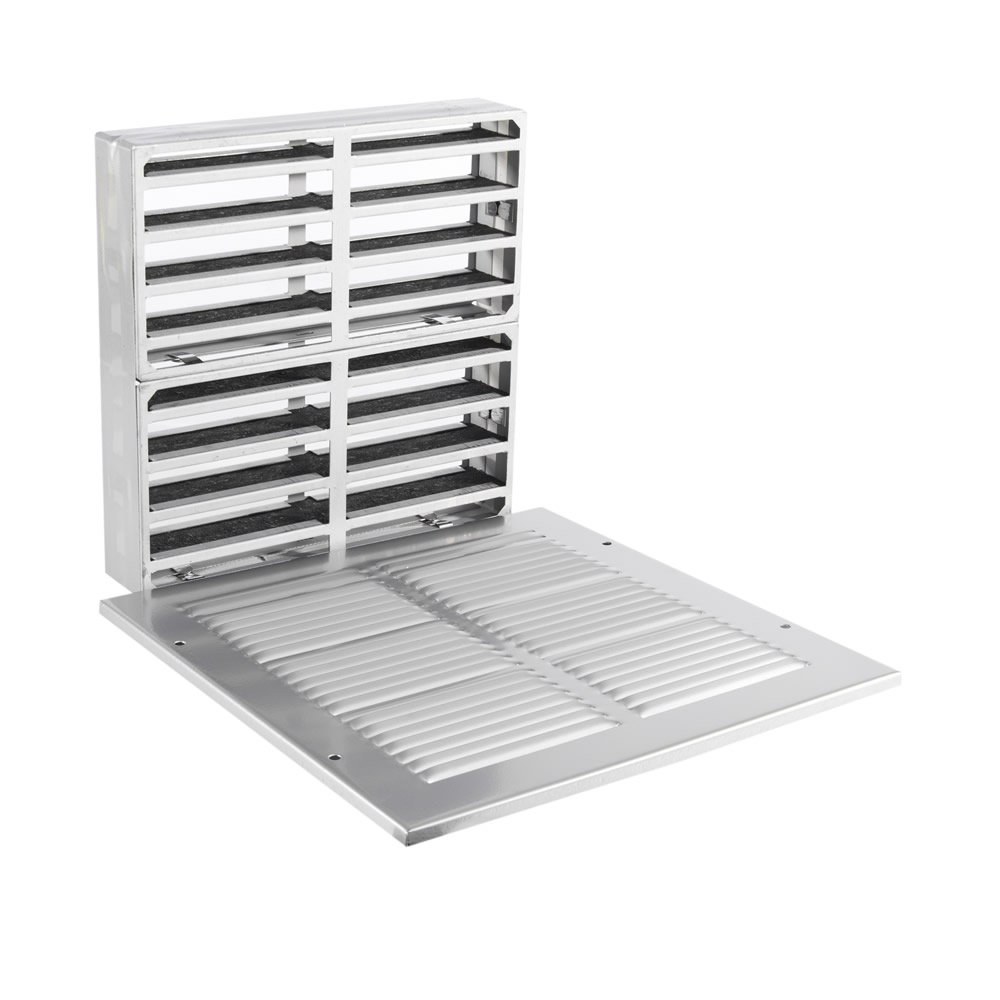Where are Dampers used?
Fire and Fire Smoke Dampers are a critical part of the fire protection system. As such they much comply with several regulations.
These units are installed in all types of environments:- Offices, Hospitals, University’s, Colleges, schools etc. the list is almost endless.
In all situations their functions are the same, to protect the occupants from fire and smoke.

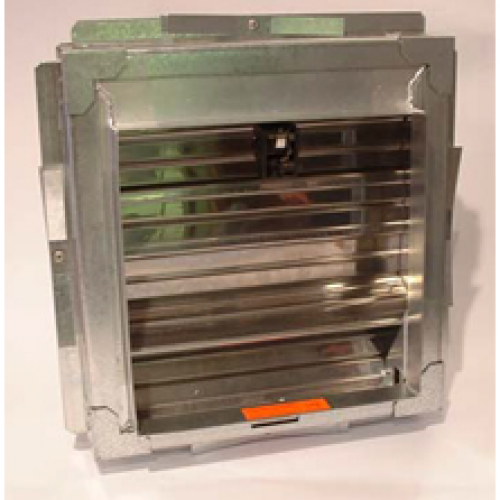
What does a Fire Damper do?
The basic purpose of fire resisting dampers is to maintain the fire compartmentation provided by fire separating/compartment walls and flows when HVAC ducts penetrate walls and floors.
Unlike fire resisting ducts, that extend the boundary of the fire compartment, dampers are designed to close the opening at the plane of the wall or floor in the event of a fire.
There are several different types of Fire Dampers
Mechanical Fire
Resisting Dampers
The basic purpose of fire resisting dampers is to maintain the fire compartmentation provided by fire separating/compartment walls and floors when HVAC ducts penetrate walls and floors. Unlike fire resisting ducts, that extend the boundary of the fire compartment, dampers are designed to close the opening at the plane of the wall or floor in the event of a fire. Mechanical fire dampers may be actuated by an integral thermal release mechanism that is activated by heat and causes the dampers to close. Some mechanical dampers incorporate a motorised system that is interfaced with smoke sensors via a fire alarm panel, thereby providing smoke containment as soon as it is detected.
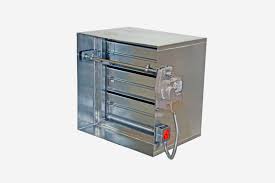
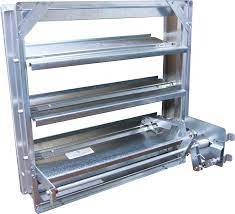
Multi-blade
Fire Dampers
Multi-blade dampers are constructed with a number of linked pivoting blades contained within a frame. The blades are release from their open position by means of a thermal release mechanism normally rated at 72ºC + 4ºc. The blades pivot/move to close the airway to prevent the passage of fire. Test results or assessments are required for plane of installation (e.g. horizontal and vertical) and the method of installation
Multi-section Dampers
Where the duct exceeds the maximum tested size of an individual damper (or single section), manufacturers may provide multi-section units. These will generally be supplied with some type of joining strip or mullion to allow the unit to be assembled on site. This joining is not, necessarily, structural. Consideration must be given by installers for additional support, particularly on larger multi-section units. Test/assessment evidence should be available for multi section dampers.
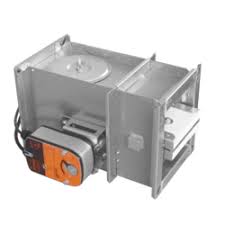
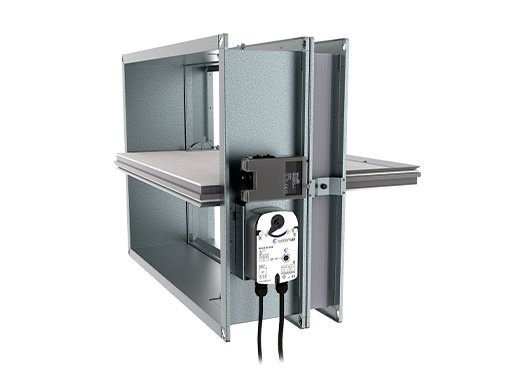
Smoke Control Damper
Smoke control dampers are single or multi-blade dampers that would generally have two safety positions, open to allow smoke extraction, or closed to maintain compartmentation. They do have thermal release mechanism, relying on a control system to ensure that they achieve the correct position.
Curtain
Fire Dampers
Folding curtain fire dampers are constructed of a series of interlocking blades, which fold to the top of the assembly permitting the maximum free area in the airway. The blades are held open by means of a thermal release mechanism normally rates at 72ºC + 4ºC. The blades fall/are sprung to fill the airway to prevent the passage of the fire. Test results or assessments are required for plane of installation (e.g. horizontal and vertical) and the method of installation.
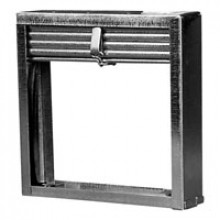
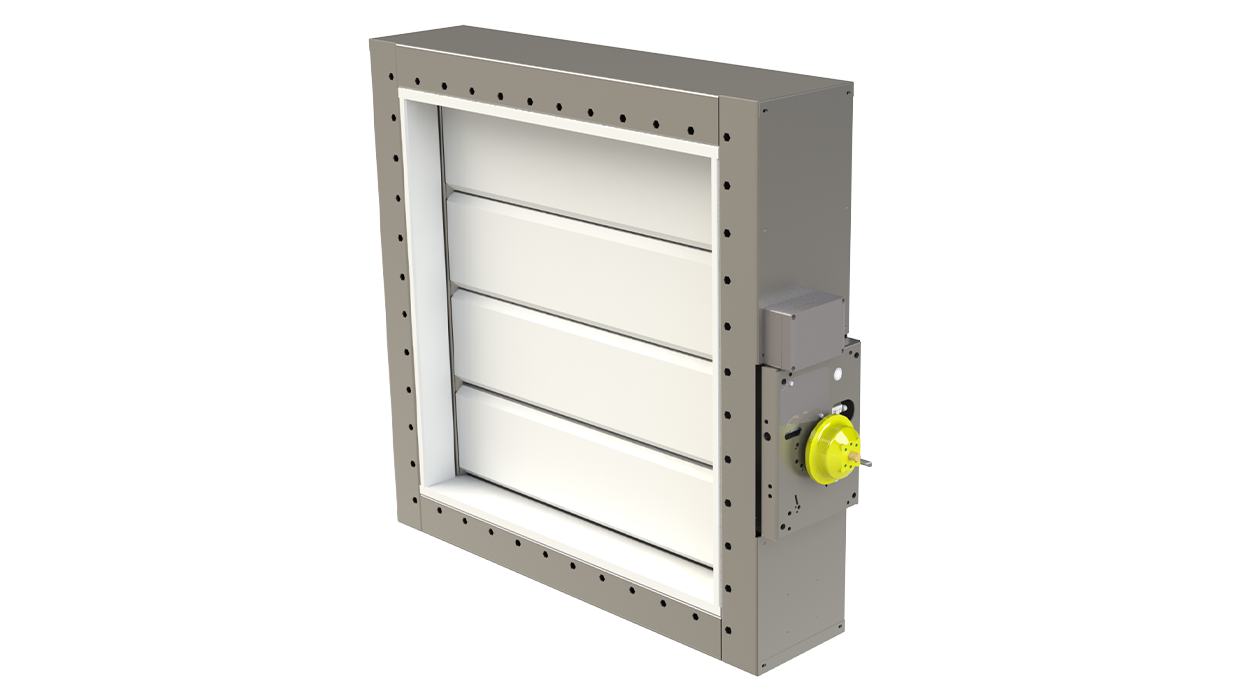
Insulated
Fire Dampers
Insulated fire damper are dampers that satisfy the appropriate integrity/leakage requirements and show insulation characteristics when tested.
Intumescent
Fire Resisting
Dampers
Intumescent fire damper incorporate components, which expand by intumescent activity under the action of heat, to close the airway to prevent the passage of fire. The intumescent materials form the main component for fire integrity. In some instance this may be supported with a mechanical device to prevent cold smoke leakage. Activation temperatures will be influenced by the type of intumescent material selected and these temperatures typically range from 120ºC to 270ºC. Some intumescent dampers, whilst containing fire and hot smoke, also incorporate an electro-mechanical device that provides cold smoke containment by interface with smoke sensors via a fire alarm panel. Test results or assessments are required for plane of installation (e.g. horizontal and vertical) and the method of installation.
